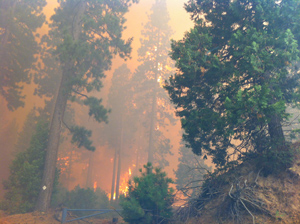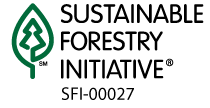Forest Fires

Fires are a part of the forest ecosystem. Plants and animals have evolved in the presence of fires but after decades of fire suppression and "hands-off" management policies, public land has unnaturally dense forests, which are prone to catastrophic wildfires. These crowded forests contribute to fires that race through the crowns of the trees making them nearly impossible to fight, worsen the soil due to the higher than normal heat intensity, and unnecessarily put human lives, animal habitats and water quality at risk.
At Sierra Pacific Industries (SPI), we use modern forest management techniques to reduce the risk of wildfire without damaging the health of the forest. The key to effective fire prevention is removal of dry brush and careful thinning of overgrown forests.
We prepare ahead of time to reduce the threat of fire and to specifically:
Sierra Pacific makes a special effort to give our forests defensible fire space. Our foresters intentionally thin out the forest in strategic spots to help stop wildfires. Typically, these spots are along ridges, near towns, and along major roads - areas where firefighters can make a stand against a raging wildfire. These thinned areas usually have some trees, and are called "shaded fuel breaks."
SPI actively works with our neighbors, conservation agencies, and fire fighters to make fire awareness a community issue. We curtail our woods operations on high fire danger days. We train all of our woods workers in the use of fire fighting equipment. And we fund and maintain a private road system that is mapped and accessible for fire fighting agencies.

After a fire, SPI quickly moves in to restore the forest and prevent environmental degradation. SPI analyzes the fire site to determine impact on soil erosion, water quality, and plant and wildlife habitat. Then, professional foresters develop and implement a plan to replant the forest and restore environmental balance often using a technique known as "subsoiling" to break up the fire-hardened surface and create furrows to catch water before it flows downhill. This allows the water to soak into the furrows and stay on the land.
SPI maintains an extensive "seed bank" that stores seeds collected from the conifers growing on Sierra Pacific lands. After a major fire, we use these seeds to replant the burned area with trees native to the site.

